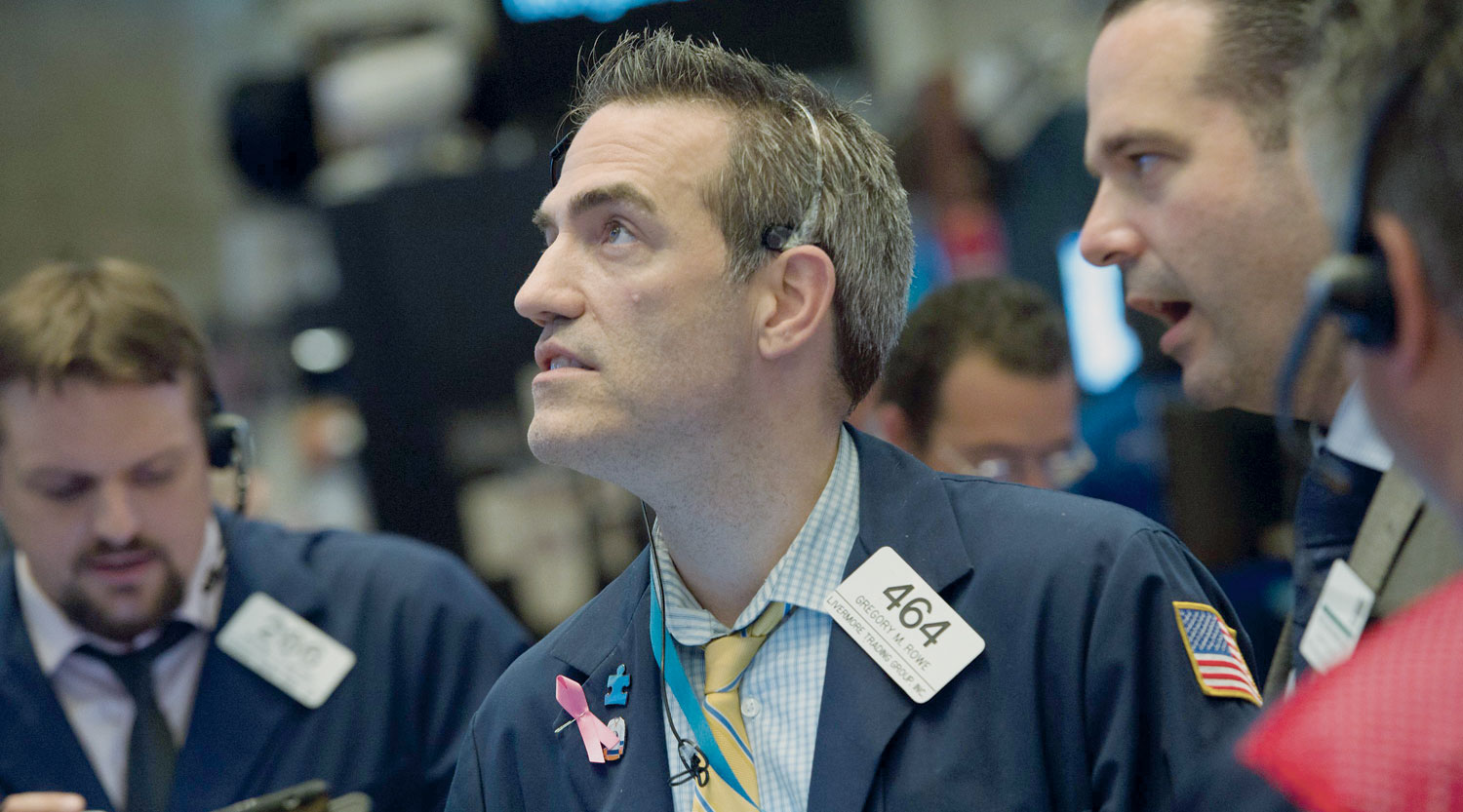

NEW YORK: Bearish stock investors are slowly coming out of hibernation, as money has begun to move into funds that aim to profit when markets dive. US mutual funds that attempt to profit in falling markets attracted $413 million in new investments during the second quarter, the funds’ largest inflows since the height of 2013’s “Taper Tantrum” sell-off, according to Thomson Reuters’ Lipper research unit.
On Thursday, the S&P 500 experienced its first 1 per cent-plus drop in 58 trading days, as the CBOE Volatility Index surged over 44 per cent, noted Bespoke Investment Group. The selling pressure in stocks follows a frustrating year-to-date for bearish stock investors, given that the S&P was up 10.5 per cent since December 31 as of Wednesday’s close. As of Thursday’s close, it is up 8.9 per cent.
Markets this week were set in negative motion after the United States and North Korea exchanged threats. President Donald Trump said Thursday that his previous promise of “fire and fury” in response to any threats from North Korea may have not gone far enough, vowing “trouble” for the country if its actions do not change.
Brad Lamensdorf, Portfolio Manager for AdvisorShares Ranger Equity Bear ETF, said he has seen demand for his fund partly driven by “people that feel like it’s time to hedge.”
“They’re pretty negative from a forward-looking view,” he said. The fund targets stocks with low earnings quality or potential accounting problems; it has attracted $20 million this year. The demand for these funds comes after a long drought, and remains a mere drop in the bucket within the fund world. The funds posted outflows in nine of the last 15 quarters, according to Lipper.
By contrast, domestic stock mutual funds and exchange-traded funds have attracted $32 billion this year, including reinvested dividends, according to the Investment Company Institute, a trade group.
Demand for international stocks and bonds has been even stronger as investors tried to dial back exposure to US stocks without the expensive costs attached to hedging strategies.
The bear funds keep a “net short” exposure to stocks, aiming to rise when markets fall. The cost of making that bet and the rising markets have helped the category deliver a negative 13.5 per cent return this year, according to Lipper data through early August.
“It’s sort of become almost a cliche that this has been the most hated bull market of all time, and I have a hard time buying into that,” said Doug Ramsey, Chief Investment Officer of the Leuthold Group LLC, whose firm offers a bear fund, the Grizzly Short Fund. The company’s tactical funds recently reduced their net equity exposure, but he said he could see another fresh top before entering a true bear market.
Several major asset managers have expressed caution in recent days.
Bridgewater Associates LP’s Ray Dalio wrote on Thursday that “prospective risks are now rising and do not appear appropriately priced in.”
Russ Koesterich at BlackRock Inc said in a note this week that tightening monetary policy in Europe and the United States could cause political uncertainty to morph “from farce into tragedy” by shaking investor confidence. Pacific Investment Management Company LLC portfolio managers Mihir Worah and Geraldine Sundstrom said US equities are “popular and crowded.”
The nonprofit American Association of Individual Investors found that 36.1 per cent of investors it surveyed expect the market to rise in the next six months, 2 percentage points below that gauge’s historical average. An above-average 32.1 per cent of investors were bearish.
“You don’t see the kind of euphoria that normally presents at the end of the cycle,” said Leon Cooperman, chief executive of hedge fund Omega Advisors Inc. “I don’t see sentiment characteristic of a top.”
US STOCKS: The three major US stocks indexes ended higher on Friday, snapping three days of losses, as investors bet on slower US rate hikes, but gains were muted by increasingly aggressive exchanges between the United States and North Korea.
Weaker-than-expected July consumer price data led investors to bet that benign inflation would keep the US Federal Reserve from raising rates again this year.
While this gave investors some hope after a jittery week, there were still signs of nervousness in choppy late afternoon trading, primarily due to ongoing threats between the United States and North Korea.
President Donald Trump said on Friday that the US military was “locked and loaded,” while Pyongyang accused him of driving the Korean peninsula to the brink of nuclear war. He told reporters in the late afternoon that he hoped North Korea “fully” understood the gravity of his warning about taking military action against the United States or its allies.
While the data gave investors appetite for growth sectors such as information technology and biotechnology it soured them to rate-sensitive stocks such as banks, said Keith Lerner, Chief Market Strategist, SunTrust Advisory services in Atlanta.
“There’s not a great incentive to buy big. You’re less than 2 per cent off the high for the S&P heading into a weekend where uncertainty with North Korea still lingers,” said Lerner.
The Dow Jones Industrial Average rose 14.31 points, or 0.07 per cent, to 21,858.32, the S&P 500 gained 3.11 points, or 0.13 per cent, to 2,441.32 while the Nasdaq Composite added 39.68 points, or 0.64 per cent, to 6,256.56. For the week the S&P fell 1.4 per cent and the Dow lost 1.1 per cent — their largest weekly drops since the week ending March 24 — and the Nasdaq was off 1.5 per cent.
— Reuters
Oman Observer is now on the WhatsApp channel. Click here



